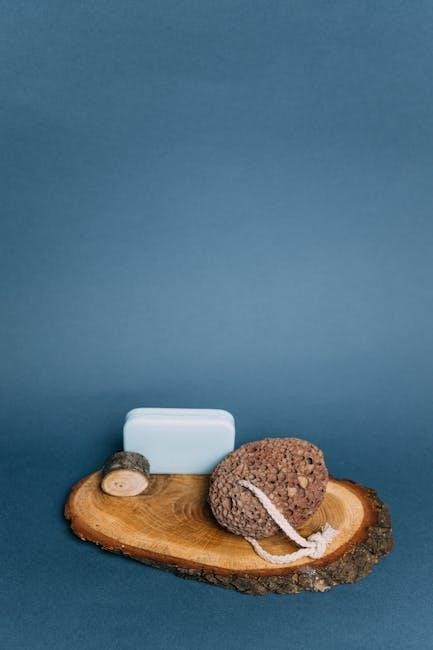SOAP notes in occupational therapy are standardized documentation tools used to record patient interactions, ensuring clear communication and consistency in treatment plans.
1.1 Definition and Purpose of SOAP Notes
SOAP notes are standardized documentation tools in occupational therapy, standing for Subjective, Objective, Assessment, and Plan. They provide a structured format to record patient interactions, ensuring consistency and clarity in treatment plans. The subjective section captures the patient’s report, while the objective section documents the therapist’s observations. The assessment synthesizes this information into a clinical judgment, and the plan outlines the next steps in treatment. SOAP notes serve to track patient progress, communicate with healthcare teams, and justify treatment decisions. They also support billing and reimbursement processes, making them essential for both clinical and administrative purposes in occupational therapy practice.
1.2 Importance of SOAP Notes in Occupational Therapy Practice
SOAP notes are vital for effective communication and continuity of care in occupational therapy. They ensure consistency in documenting patient progress, allowing healthcare teams to align on treatment goals. By standardizing documentation, SOAP notes enhance accountability and compliance with legal and professional standards. They also support reimbursement processes by providing clear evidence of treatment rationale and outcomes. Additionally, SOAP notes facilitate interprofessional collaboration, enabling seamless sharing of patient information. Their structured format aids in tracking patient responses to interventions, informing clinical decision-making, and ensuring high-quality care. Ultimately, SOAP notes are essential for maintaining organized, accurate, and legally sound records in occupational therapy practice.

Components of a SOAP Note
A SOAP note consists of four key components: Subjective, Objective, Assessment, and Plan. These sections ensure comprehensive documentation of patient interactions and treatment progress in occupational therapy;
2.1 Subjective (Patient’s Report)
The Subjective section captures the patient’s self-reported information, including symptoms, concerns, and medical history. This part of the SOAP note focuses on the patient’s perspective, detailing their experiences and feelings about their condition. It includes statements made by the patient or their caregiver, such as pain levels, functional challenges, or changes in daily activities. This information helps occupational therapists understand the patient’s needs and priorities, ensuring personalized and patient-centered care. By documenting the patient’s voice, the Subjective component builds trust and collaboration, forming the foundation for effective treatment planning and goal setting in occupational therapy sessions.
2.2 Objective (Therapist’s Observations)
The Objective section documents the therapist’s measurable observations during the session. This includes physical assessments, such as range of motion, strength, posture, and coordination, as well as functional abilities like dressing, feeding, or mobility. The therapist may also note behavioral cues, like attention or emotional state, and any environmental factors impacting the patient. These observations are factual and quantifiable, providing a clear snapshot of the patient’s current status. They are used to track progress, inform treatment adjustments, and ensure consistency in care. This section complements the Subjective report, offering a balanced view of the patient’s condition and needs.
2.3 Assessment (Clinical Judgment)
The Assessment section reflects the therapist’s professional judgment, synthesizing the Subjective and Objective data to provide clinical insights. It connects observed deficits or improvements to the patient’s functional abilities and treatment goals. Here, the therapist interprets findings, identifies patterns, and determines the patient’s progress toward outcomes. This section may address barriers to progress, such as environmental factors or comorbidities, and highlights the patient’s potential for further improvement. The Assessment serves as the foundation for updating the treatment Plan, ensuring interventions remain relevant and effective. Clear and concise language is crucial to convey the therapist’s clinical reasoning accurately. This step ensures continuity and purpose in the therapeutic process.
2.4 Plan (Next Steps in Treatment)
The Plan section outlines actionable steps for the patient’s continued care, based on the Assessment. It includes specific, measurable goals and interventions tailored to address identified deficits. This may involve modifying existing treatments, introducing new exercises, or incorporating assistive devices. The Plan also specifies the frequency and duration of future sessions. Additionally, it may include patient education, home exercises, or referrals to other specialists. Clear communication of the Plan ensures all stakeholders are aligned on the next steps. Regular reassessment and documentation of progress are essential to adjust the Plan as needed, ensuring the patient’s needs remain the focus of treatment.

Key Elements of SOAP Notes in Occupational Therapy
Key elements include patient history, physical examination findings, mental state exams, and investigation results, ensuring comprehensive documentation of patient status and treatment progress.
3.1 Patient History and Background
Patient history and background are crucial in SOAP notes, providing context about the individual’s medical, social, and functional status. This section includes details about the patient’s medical history, previous treatments, and any relevant personal information that may impact their occupational therapy needs. It also covers daily routines, living situation, and support systems, which are essential for tailoring interventions. Understanding the patient’s background helps occupational therapists identify long-term goals and develop personalized treatment plans. This information is often gathered during initial consultations and updated as therapy progresses, ensuring a comprehensive understanding of the patient’s unique circumstances and needs.
3.2 Physical Examination Findings
Physical examination findings in SOAP notes document the therapist’s objective observations of the patient’s physical condition. This section includes posture analysis, spinal alignment, range of motion, muscle tone, strength, and joint tenderness. It also covers sensory and motor function assessments, gait analysis, and any physical limitations impacting daily activities. These findings help guide treatment plans and monitor progress. Therapists use standardized tools or manual tests to gather accurate data, ensuring consistency in documentation. Detailed physical examination findings are essential for developing targeted interventions and communicating a patient’s status to other healthcare providers. Regular updates to this section track changes over time, informing ongoing care planning.
3.3 Mental State Examination
The mental state examination in SOAP notes assesses a patient’s cognitive, emotional, and behavioral status. It includes observations of appearance, mood, affect, thought processes, and communication skills. Therapists note any signs of anxiety, depression, confusion, or other mental health concerns. Cognitive function, such as memory, attention, and problem-solving abilities, is also evaluated. This information helps occupational therapists understand how mental state impacts daily functioning and participation in therapy. The findings guide treatment adjustments and ensure a holistic approach to care. Regular documentation of mental state changes supports effective collaboration with mental health professionals and informs individualized intervention strategies.
3.4 Investigation Results
In SOAP notes, investigation results refer to the findings from diagnostic tests or assessments relevant to the patient’s condition. These may include lab tests, imaging studies, or functional assessments. The results are documented objectively, providing clarity on the patient’s medical status. For example, lab results might show inflammation levels, while imaging could reveal structural abnormalities. Functional assessments might measure range of motion or cognitive abilities. These findings help occupational therapists identify underlying issues and align treatment plans with medical evidence. Accurate documentation of investigation results ensures informed decision-making and effective collaboration with other healthcare providers. This section is crucial for tracking progress and adjusting interventions.

SOAP Note Templates for Occupational Therapy
SOAP note templates streamline documentation, ensuring consistency and efficiency in occupational therapy. They include sections for patient history, treatment plans, and progress tracking, saving time and improving clarity. These templates are customizable to meet specific patient needs, offering a structured format for therapists to document assessments and interventions effectively. By using predefined templates, occupational therapists can maintain organization and focus on delivering high-quality care while adhering to professional standards. Regular updates and adaptability to different patient scenarios make these templates indispensable tools in modern OT practice.
4.1 Structure of a SOAP Note Template
A SOAP note template includes four main sections: Subjective, Objective, Assessment, and Plan. The Subjective section captures the patient’s self-reported information, such as symptoms or concerns. The Objective section documents measurable observations, like physical examination findings or test results. The Assessment section provides the therapist’s clinical judgment, linking the subjective and objective data. Finally, the Plan outlines the next steps, including interventions, goals, or referrals. These sections ensure consistency and organization, making it easier to track patient progress and communicate effectively with other healthcare providers. The template also often includes additional fields for patient history, treatment goals, and progress notes, tailored to occupational therapy needs.
4.2 Customization Options for OT Templates
SOAP note templates for occupational therapy can be tailored to meet specific practice needs. Therapists can add sections for patient history, treatment goals, or progress tracking. Customizable fields allow for detailed documentation of interventions, such as adaptive equipment recommendations or home exercises. Some templates include drop-down menus or checkboxes for efficient data entry. Additionally, EMR systems often enable therapists to save frequently used phrases or modify templates to align with their practice style. This flexibility ensures that documentation remains relevant and patient-centered, while also streamlining the process. Customization options enhance the utility of SOAP notes, making them a valuable tool for occupational therapy practice.

Examples of SOAP Notes in Occupational Therapy
SOAP notes in occupational therapy provide structured examples for documenting patient progress, treatment plans, and functional activities, ensuring clear and consistent communication of care.
5.1 Sample SOAP Note for a Patient with Physical Disabilities
A 45-year-old patient with a spinal cord injury reported difficulty with transfers and adaptive equipment use. Objective observations included limited range of motion in the upper extremities and muscle weakness. Assessment revealed the need for strengthened upper body mobility and improved wheelchair navigation skills. The plan included twice-weekly OT sessions focusing on transfer training, adaptive equipment education, and home modification recommendations. Progress was tracked through functional assessments and caregiver feedback, ensuring tailored interventions to enhance independence and safety in daily activities. This structured approach highlights the effectiveness of SOAP notes in documenting and guiding patient-centered care for individuals with physical disabilities.
5.2 Sample SOAP Note for a Patient with Cognitive Impairments
A 60-year-old patient with Alzheimer’s disease reported difficulty remembering daily tasks and confusion in familiar environments. Objective observations included disorientation to time, impaired problem-solving, and difficulty recalling recent events. The assessment highlighted significant cognitive decline impacting daily living skills and safety awareness. The treatment plan focused on cognitive rehabilitation, memory aids, and caregiver education. Interventions included memory strategy training and environmental modifications to enhance safety. Progress was monitored through caregiver feedback and functional assessments, emphasizing the importance of adapting strategies to support the patient’s declining cognitive abilities and promote participation in meaningful activities despite limitations.

Writing Effective SOAP Notes
Clear, concise, and thorough documentation is essential. Use templates and adhere to guidelines to ensure consistency, accuracy, and compliance in occupational therapy SOAP notes.
6.1 Tips for Clear and Concise Documentation
Use standardized templates to streamline documentation, ensuring consistency and efficiency. Focus on relevant details, avoiding unnecessary jargon. Include patient-reported symptoms, objective observations, and clear assessments. Prioritize concise language while maintaining completeness. Regularly review and update notes to reflect progress and changes in treatment plans. Ensure compliance with HIPAA guidelines to protect patient confidentiality. Utilize bullet points or headings to enhance readability. Avoid ambiguity by documenting specific measurable goals and outcomes. Incorporate feedback from patients and caregivers to provide a holistic view of care. Finally, proofread notes for clarity and accuracy to ensure effective communication among healthcare providers.
6.2 Common Mistakes to Avoid
Common mistakes in SOAP note documentation include using vague language, omitting specific details, and failing to update plans regularly. Avoid mixing subjective and objective data, as this can confuse clarity. Ensure all entries are dated and signed for accountability. Overlooking patient-reported symptoms or neglecting to document progress can lead to incomplete records. Avoid using jargon or abbreviations that may be misunderstood. Failing to proofread for errors can result in miscommunication. Additionally, not adhering to HIPAA guidelines or omitting necessary consent documentation can lead to legal issues. By being mindful of these pitfalls, occupational therapists can ensure accurate, professional, and effective SOAP note documentation.
Best Practices for SOAP Note Documentation
Always ensure accuracy, clarity, and organization when documenting SOAP notes. Adhere to professional standards and include all necessary components.
Regularly review and update notes, use digital tools for efficiency, and ensure compliance with legal and ethical guidelines like HIPAA.
7.1 Ensuring Accuracy and Relevance
Accuracy and relevance are critical in SOAP note documentation to ensure effective patient care and legal compliance. Use clear, concise language and avoid ambiguous statements. Always verify patient information and clinical findings before documenting; Ensure that each section of the SOAP note aligns with the patient’s current condition and therapy goals. Regularly review and update documentation to reflect progress or changes in treatment plans. Incorporate relevant data from physical examinations, mental state assessments, and investigation results. Avoid including unnecessary details that do not contribute to the patient’s care. Standardized templates can help maintain consistency and reduce errors, ensuring that documentation remains focused and purposeful.
7.2 Maintaining Patient Confidentiality
Maintaining patient confidentiality is a legal and ethical obligation in occupational therapy. SOAP notes contain sensitive patient information, so they must be handled securely. Ensure compliance with HIPAA standards by limiting access to authorized personnel. Store physical and digital SOAP notes in secure, encrypted systems. Avoid discussing patient details in public areas or sharing them without consent. Use secure communication channels when transmitting SOAP notes electronically. Regularly train staff on confidentiality protocols to prevent breaches. Patients trust therapists with personal information, and safeguarding their privacy is essential for ethical practice and building trust in the therapeutic relationship.

Digital Tools for Streamlining SOAP Notes
Digital tools like EMR systems and AI-enabled SOAP note generators simplify documentation, reduce errors, and improve efficiency in occupational therapy practice, ensuring compliance with regulatory standards.
8.1 EMR Systems and SOAP Note Templates
EMR (Electronic Medical Record) systems offer integrated SOAP note templates, enabling occupational therapists to streamline documentation efficiently. These templates provide structured formats for recording subjective, objective, assessment, and plan details, ensuring consistency and compliance. Customizable options allow therapists to tailor templates to specific patient needs, while features like auto-fill and voice-to-text capabilities enhance productivity. By leveraging EMR systems, occupational therapists can quickly generate, edit, and store SOAP notes, reducing documentation time and improving accuracy. Additionally, these systems facilitate easy access to previous notes, supporting continuity of care and seamless communication among healthcare providers. This integration of technology promotes efficient and high-quality patient documentation practices.
8.2 AI-Enabled SOAP Note Generators
AI-enabled SOAP note generators are revolutionizing occupational therapy documentation by automating the creation of SOAP notes. These tools use artificial intelligence to analyze patient data, therapist inputs, and session details, generating structured and accurate notes. AI algorithms can identify patterns, predict outcomes, and even suggest treatment plans based on historical data. This not only reduces documentation time but also minimizes errors, allowing therapists to focus more on patient care. Additionally, AI-driven generators can integrate with EMR systems, ensuring seamless data flow and compliance with regulatory standards. By leveraging AI, occupational therapists can produce high-quality SOAP notes efficiently, enhancing both productivity and patient outcomes.

Legal and Compliance Considerations
Legal compliance in SOAP notes ensures HIPAA standards, accurate documentation, and proper billing, safeguarding patient confidentiality and supporting reimbursement while maintaining ethical practice.
9.1 HIPAA Compliance in Documentation
HIPAA compliance is essential for protecting patient confidentiality in SOAP notes. Occupational therapists must ensure all documentation adheres to HIPAA standards, safeguarding Protected Health Information (PHI). This includes securing electronic records, limiting access to authorized personnel, and avoiding unauthorized disclosure. Proper encryption and secure storage of SOAP notes are critical. Therapists should also avoid including unnecessary personal details and ensure patient consent is obtained for sharing information. Regular training on HIPAA guidelines helps maintain compliance, ensuring ethical and legal standards in documentation practices.
- Use encrypted systems for storing and transmitting SOAP notes.
- Limit access to PHI to authorized personnel only.
- Avoid including unrelated personal information.
- Ensure patient consent for sharing records.
9.2 Billing and Reimbursement Requirements
SOAP notes play a critical role in billing and reimbursement for occupational therapy services. Accurate and detailed documentation ensures that insurance providers can verify the medical necessity of treatments; Therapists must include specific codes, such as CPT and ICD-10 codes, to justify billing claims. Clear documentation of treatment plans, patient progress, and goals is essential for reimbursement. Additionally, SOAP notes must adhere to payer-specific requirements, ensuring timely and accurate processing of claims. Regular updates in SOAP notes demonstrate ongoing patient care, supporting continued reimbursement for therapy sessions. Proper documentation not only facilitates billing but also ensures compliance with regulatory standards.
- Include CPT and ICD-10 codes for billing accuracy.
- Document treatment plans and patient progress.
- Adhere to payer-specific requirements.
- Update notes regularly to justify ongoing care.

Troubleshooting Common Issues
Identifying and resolving inconsistencies in SOAP notes ensures accurate documentation. Addressing incomplete or unclear information helps maintain clarity and effectiveness in patient care and communication.
10.1 Addressing Incomplete or Inaccurate Documentation
Incomplete or inaccurate documentation in SOAP notes can lead to misunderstandings and negatively impact patient care. To address this, occupational therapists should review notes for clarity and completeness. Ensuring all sections (Subjective, Objective, Assessment, Plan) are thoroughly filled out is crucial. Regular audits and peer reviews can help identify gaps. Therapists should also verify patient information and treatment details for accuracy. Implementing standardized templates and training staff on proper documentation practices can reduce errors. Additionally, leveraging technology, such as EMR systems with built-in checks, can help flag incomplete or inconsistent entries. Promptly addressing these issues ensures reliable and effective documentation.
10.2 Resolving Discrepancies in SOAP Notes
Resolving discrepancies in SOAP notes requires clear communication and a systematic approach. Discrepancies often arise from misinterpretations or omissions in documentation. Therapists should promptly review and cross-verify the notes with the patient’s records and treatment plans. Open dialogue between team members ensures alignment and accuracy. When inconsistencies are found, they should be addressed by updating the notes with corrected information and noting the revision. Regular training on documentation standards and the use of digital tools can help prevent future discrepancies. Ensuring accurate and consistent SOAP notes is essential for maintaining high-quality patient care and legal compliance.

Future Trends in SOAP Note Documentation
Future trends include advanced AI integration for automating SOAP notes, enhancing efficiency and accuracy. Digital tools and EMR systems will streamline documentation, supporting interprofessional collaboration and improving patient care continuity;
11.1 Integration of Technology in OT Documentation
The integration of technology in OT documentation is revolutionizing SOAP note creation, enabling faster, more accurate, and standardized reporting. AI-powered tools now assist in generating SOAP notes, reducing manual effort and potential errors. Electronic Medical Records (EMR) systems provide centralized platforms for secure, real-time documentation, enhancing collaboration among healthcare providers. Digital templates and automated workflows streamline the process, ensuring compliance with legal and regulatory standards. Additionally, AI-driven analytics can identify trends in patient progress, aiding in personalized treatment plans. These advancements not only improve efficiency but also elevate the quality of care by ensuring comprehensive and accessible patient records for all stakeholders involved.
11.2 The Role of Interprofessional Collaboration
Interprofessional collaboration plays a vital role in occupational therapy, with SOAP notes serving as a common language among healthcare providers. By documenting patient progress, challenges, and treatment plans, SOAP notes ensure seamless communication between occupational therapists, physicians, nurses, and other specialists. This collaboration enhances comprehensive care, as each provider can review and contribute to the patient’s record. It also supports coordinated decision-making, ensuring interventions align with overall treatment goals. Additionally, SOAP notes facilitate accountability and transparency, making it easier to track patient outcomes and justify treatment strategies. This teamwork not only improves patient care but also strengthens the efficiency and effectiveness of interdisciplinary healthcare delivery.
SOAP notes are essential in occupational therapy for documenting patient progress, ensuring clear communication, and guiding treatment plans. They enhance consistency, clarity, and collaboration, ultimately improving patient care and outcomes.
12.1 Summary of Key Points
SOAP notes in occupational therapy are essential for documenting patient interactions, ensuring clear communication, and maintaining consistency in treatment plans. They help track patient progress, communicate with healthcare providers, and support billing processes. Effective SOAP notes are clear, concise, and free from errors, providing a structured format for subjective, objective, assessment, and plan sections. Customization and adherence to legal standards like HIPAA are crucial. Regular training and the use of templates can enhance documentation efficiency. By following best practices, occupational therapists can ensure accurate, relevant, and compliant SOAP notes that improve patient care and interprofessional collaboration.
12.2 Final Thoughts on SOAP Notes in Occupational Therapy
SOAP notes are a cornerstone of occupational therapy, ensuring effective communication and continuity of care. They provide a structured format for documenting patient progress, treatment plans, and clinical reasoning. By mastering SOAP notes, therapists can enhance their practice, improve patient outcomes, and maintain compliance with legal standards. As the field evolves, embracing digital tools and best practices will further streamline documentation. Ultimately, SOAP notes remain essential for delivering high-quality, patient-centered care and fostering collaboration among healthcare professionals. Continuing education and adherence to documentation standards will ensure their enduring value in occupational therapy practice.



